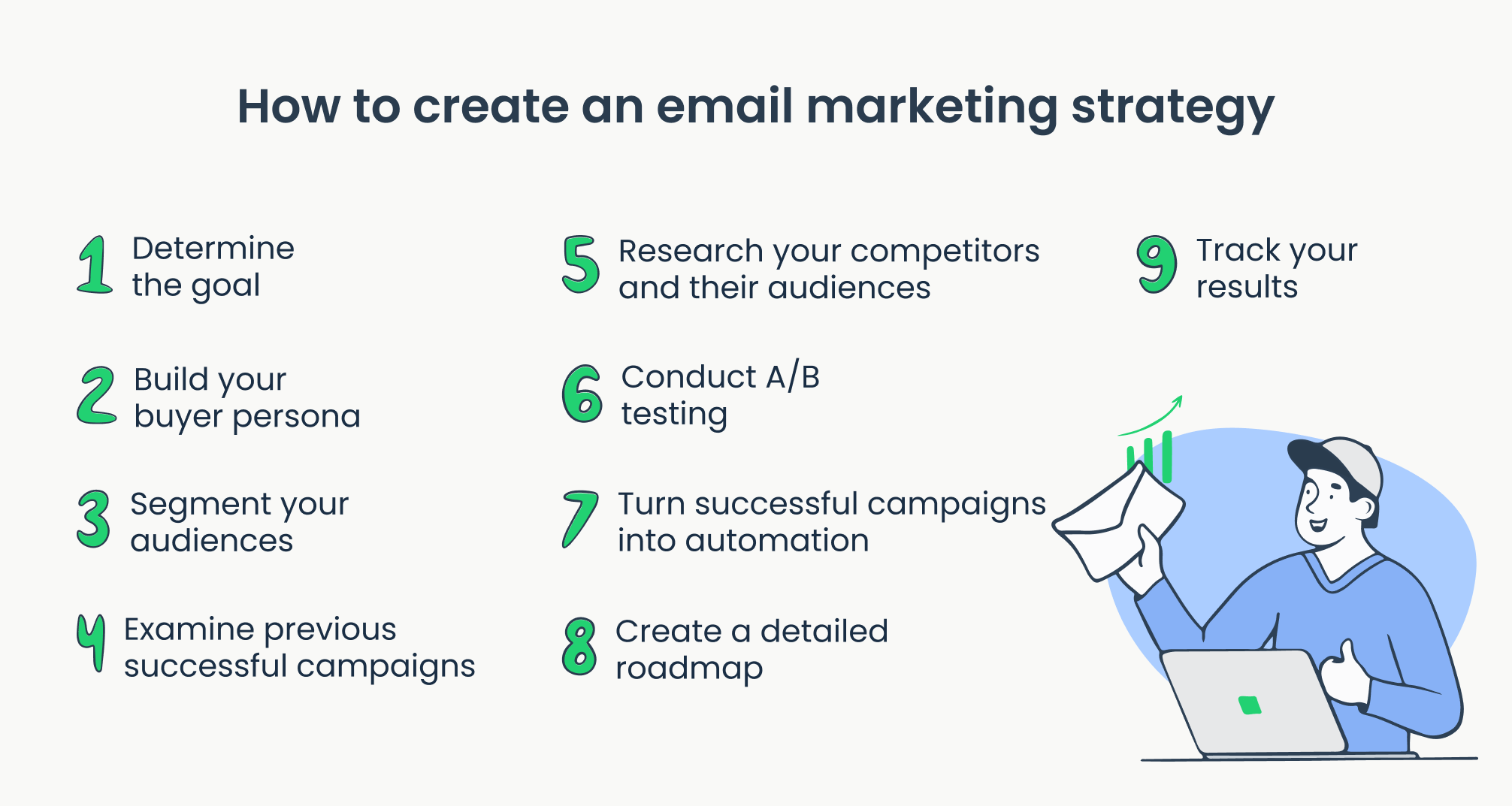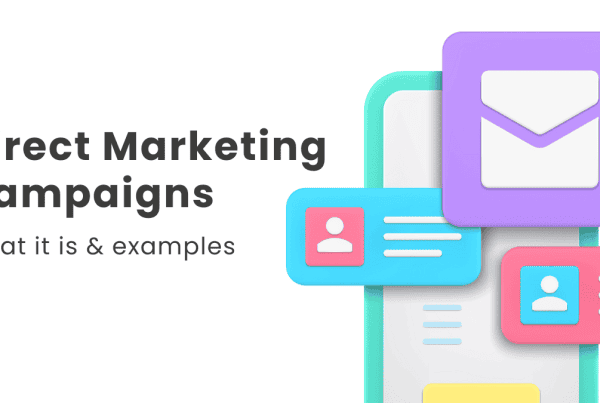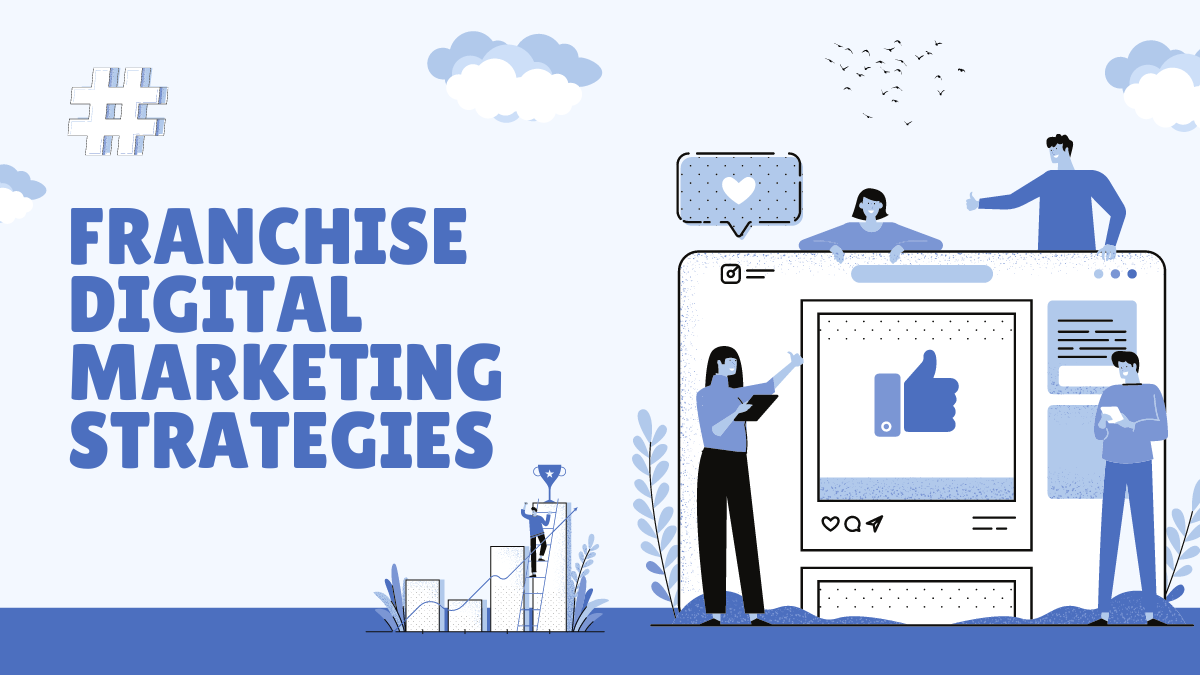
Digital marketing has evolved significantly and it is a must for businesses. Digital marketing refers to the use of online platforms and technologies to promote products and services. It encompasses a wide range of strategies, including search engine optimization (SEO), social media marketing, email marketing, content marketing, and more. The importance of digital marketing in today’s world cannot be overstated. With the majority of consumers using the internet to make purchasing decisions, businesses that do not have a strong online presence risk falling behind.
When it comes to franchises, digital marketing presents both unique challenges and opportunities. Franchises often operate in multiple locations, each with its local market characteristics. This requires a balanced approach to digital marketing, one that combines broad, brand-wide strategies with localized campaigns tailored to individual markets. At the same time, the digital realm offers franchises unparalleled growth opportunities.
Through effective digital marketing, franchises can reach more potential customers, build stronger relationships with existing ones, and ultimately drive greater success for their business.
Want to know the strategies and steps? Just stay with us, because we are mentioning the top 10 strategies for franchise digital marketing in this article.
10 Effective Strategies for Franchise Digital Marketing
Here are the top 10 strategies for franchise digital marketing. You can use them as steps and then you can proceed step-by-step to boost your franchise business.
Understanding Your Audience
Understanding who your audience likes, what they like, and how they act is important for success in digital marketing. It’s like really getting to know your business inside out. If you know your audience well, your marketing might hit the mark and could be a good use of time.
Knowing who your audience is means you can make your messages fit exactly what they want and like. This makes it more likely they’ll pay attention to what you’re saying and even buy what you’re offering. It helps you make content that connects with them, pick the best places to talk to them and decide smartly about how to advertise. So, how do you gather and use data about your audience?
Gathering Data
Data about your audience can be gathered through various means. These include:
- Customer Surveys: Talking directly to your customers and asking them what they like, what they need, and how they act can give you really useful information.
- Website Analytics: Programs like Google Analytics can give you information about the people who visit your website, like their age, what they’re interested in, and what they do on your site.
- Social Media Analytics: On social media, you can find out lots of stuff about the people who follow you, like how old they are, what they like, and how they interact with your posts.
- Customer Relationship Management (CRM) Systems: CRM systems keep track of lots of details about your customers. They can tell you what they’ve bought from you before, how they’ve talked to your business, and other important stuff like that.
Using Data
Once you’ve gathered data about your audience, it’s time to put those insights to use. Here’s how:
- Segmentation: Split your audience into groups based on things they have in common. This helps you make your marketing fit exactly what each group wants and likes.

- Personalization: Use information you have about your customers to make your marketing messages special for each person. It could be as easy as saying their names in emails or as tricky as suggesting products they might like based on what they’ve bought before.
- Content Creation: Look at what you know about your audience to make the content they’ll like. You can talk about things they often ask about, chat about stuff they find interesting, or offer answers to the problems they have.
- Platform Selection: Look at what your audience does online to pick the best places to talk to them. If they’re always on Instagram, then it’s smart to put more effort into reaching them there.
Building a Strong Website
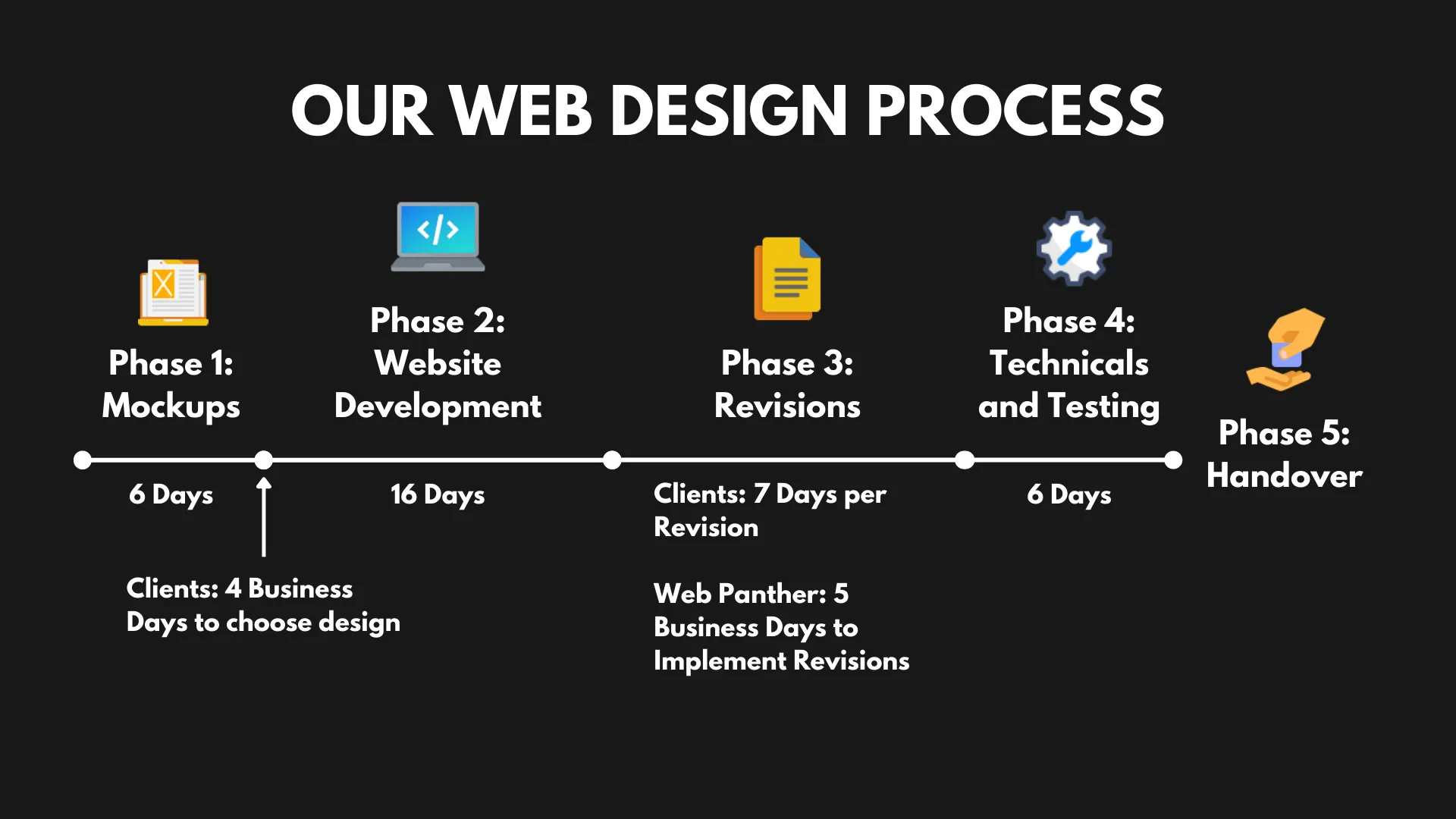
Think of your website as your shop’s front window in the digital world. It’s usually the first thing people see when they find you online, so it’s important for your business. If your website looks great and works well, it can draw in customers and keep them coming back. Plus, it shows that you’re trustworthy and serious about what you do, helping you stand out online.
Here are some tips for creating a user-friendly, informative, and visually appealing website:
User-Friendly Design
- Navigation: Make sure your website is easy for people to move around. Having a simple menu that makes sense can help visitors find what they want without any trouble.
- Mobile Responsiveness: Since lots of folks use their phones to go online, your website must work well on mobile too. It should look good and work right whether someone’s using a computer or a smartphone.
- Loading Speed: Websites that take too long to load can annoy visitors and make them leave quickly. To make your website faster, you can shrink the size of images, save parts of the website that don’t change often, and use fewer extra features like scripts and plugins.
Informative Content
- Clear Messaging: Your website needs to tell people clearly who you are, what you do, and how you can help them. Don’t use fancy words that people might not understand. Keep your messages easy to understand and direct.
- Detailed Product/Service Information: Give lots of info about what you’re selling. It helps people decide if they want to buy from you, and it can make your website show up more in search engines.
- Contact Information: Make sure folks can reach out to you without any hassle. Put different ways for them to contact you, like phone numbers, email addresses, or a form they can fill out, and make sure it’s easy for them to see this info on your website.
Visually Appealing Design
- Professional Design: Having a website that looks good and professional can make people trust you more. You might want to think about getting a web designer to help you out, or you could use a good website template that already looks great.
- Consistent Branding: Your website should look and feel like your brand. Use the same colors, fonts, and pictures all over your website so it’s clear it’s yours.
- High-Quality Images: Using good pictures on your website can make it look nicer and show off what you’re selling better.
Your website is an extension of your brand. By investing in a strong website, you’re not only improving your digital marketing efforts but also providing a better experience for your customers.
Search Engine Optimization (SEO)
Search Engine Optimization (SEO) is like giving your website a boost so it shows up more often when people search for things online. It’s about making sure your website pops up when folks look for stuff like what you sell or talk about. The cool thing about SEO is that it brings in free visitors to your website from search engines. When you do SEO right, more people can find your site, visit it, and maybe even buy something.
Here are some strategies for improving SEO:
Using Keywords
Keywords are like the special words and phrases that people type when they’re searching for stuff online. If you figure out which keywords are important for your business and use them smartly in your website, it helps search engines know what your site is all about.
This makes it more likely that your website will pop up when people search for things related to your business.
- Keyword Research: You can use tools like Google Keyword Planner or SEMrush to figure out what words people are typing into search engines when they’re looking for stuff like yours.
- Keyword Placement: Put the words people use to search for things in important spots on your website, like the title, the little description you see on search results, the titles of sections, and the main writing.
- Long-Tail Keywords: These are longer phrases that people type into search engines to find exactly what they’re looking for. They’re usually not as common as short phrases, but they can be easier to compete for and they’re better at bringing in the right kind of visitors to your website.
Improving Site Speed
Site speed refers to how quickly your website loads. Search engines favor faster websites because they provide a better user experience.
- Optimize Images: Big picture files can make your website take longer to load. You can use special tools to make the pictures smaller without making them look bad.
- Enable Compression: Use special programs to make your CSS, HTML, and JavaScript files smaller. This helps your website load faster.
- Reduce Redirects: When a page sends you to another page, it takes longer for the new page to load. Try to have as few of these redirects as possible to keep things moving quickly for your visitors.
SEO is like planting seeds in a garden. It takes time for them to grow, but once they do, you’ll see the benefits. By improving your SEO, you’re making it easier for people to find your website when they search online, and that’s important for your business.
Pay-Per-Click Advertising (PPC)
Pay-per-click (PPC) advertising is like renting space to put up your ads online. Every time someone clicks on your ad, you pay a small fee. Instead of waiting for people to find your website naturally, PPC lets you bring visitors directly to your site by paying for each click on your ad and helps franchise digital marketing a lot.
PPC advertising has several benefits:
- Immediate Traffic: Unlike growing a garden, which takes time, PPC is like turning on a faucet – you see results right away. When you start a PPC campaign, your ads show up instantly, bringing people to your website.
- Targeted Advertising: PPC allows you to target your ads to specific demographics, locations, and times of day. This means you can reach the right people at the right time with the right message.
- Measurable Results: With PPC, you can track how many people saw your ad, how many clicked on it, and how many took a desired action on your website. This makes it easy to measure your return on investment.
Here are some tips for running a successful PPC campaign:
- Keyword Research: Just like with SEO, successful PPC campaigns start with keyword research. You need to know what terms your potential customers are searching for.
- Ad Copy: Write compelling ad copy that encourages users to click on your ad. Highlight your unique selling points and include a clear call to action.
- Landing Page: Make sure the landing page you’re directing traffic to is relevant to your ad and offers a seamless user experience. The more relevant your landing page is to the user’s search query, the higher your Quality Score will be, which can lead to lower costs and better ad positions.
- Bid Strategy: Decide how much you’re willing to pay for each click. This will depend on your budget and how much a visitor is worth to you. Remember, the goal is not just to get clicks, but to get clicks that lead to conversions.
- Continuous Testing and Optimization: PPC is not a set-it-and-forget-it strategy. Regularly review your campaign’s performance and make necessary adjustments to optimize its effectiveness.
Running a successful PPC campaign needs careful planning, keeping an eye on it all the time, and making improvements regularly. But if you get it right, PPC can be a super strong weapon in your digital marketing toolkit.
Social Media Marketing
Social Media Marketing means using social media sites to talk to your audience, make your franchise stronger, sell more stuff, and get more people to visit your website. It’s about posting awesome stuff on your social media pages, chatting with your followers, checking how well you’re doing, and sometimes putting up ads on social media.
The major social media platforms at present are Facebook, Instagram, Twitter, LinkedIn, Pinterest, YouTube, Snapchat, and TikTok. Each of these social media platforms offers unique ways to connect and engage with your audience.
Here are some strategies for effective social media marketing:
Choosing the Right Platforms
Not every social media site will work for your business. It depends on what you do and where the people you want to reach hang out online. For example, if you sell stuff to other businesses, LinkedIn might be better for you than Instagram.
Creating Engaging Content
Content is king in social media marketing. The type of content you should create depends largely on your audience. Here are a few types of content you could consider:
- Images: When you post something on social media, like Facebook or Instagram, and include a picture with it, it’s more likely that other people will share it with their friends or followers. People just seem to like sharing things that have pictures more than things that are just words
- Videos: When you make a video, like a quick one on TikTok, a longer one on YouTube, or even a live one on Facebook, it’s a really good way to get people interested in what you’re saying or doing. Videos are cool because they show things happening instead of just talking about them.
- User-Generated Content: You can ask the people who use your stuff, like your products, to share their thoughts or pictures about them. Then, you can show off what they said or the pictures they took on your social media pages. It’s a neat way to let others see how much people like your products. Plus, it makes your customers feel special because you’re putting their stuff out there for others to see.
Consistent Branding
It’s important to keep everything about your business looking the same on all the different social media sites you use. That means using the same name for your business, having the same logo, and writing a similar short description about what you do. Also, try to make your posts look similar so people can easily recognize that it’s your business talking, even if they’re on different social media sites.
Regular Interaction
Social media is like a big party where everyone talks to each other. It’s not just about posting things and leaving them there. You should reply to the comments people leave on your posts, like when someone says something nice or asks a question. It’s also cool to talk to other businesses or brands, kind of like making friends.
Social media marketing is about building relationships and driving engagement. It’s a powerful tool for businesses of all sizes – you just need to know how to use it right!
Email Marketing
Email marketing is like sending messages to your customers through email. It’s a strong and affordable way to keep in touch with them directly. This helps businesses in many ways and brings lots of advantages.
Benefits of E-mail Marketing
- Cost-Effective: Compared to traditional marketing methods, e-mail marketing is significantly cheaper. It eliminates the costs associated with printing, postage, and advertising space.
- Targeted Audience: E-mail marketing allows you to segment your audience and tailor your message to meet their specific needs, leading to higher conversion rates.
- Immediate Impact: E-mails can be delivered instantly, making it possible to see results within minutes of sending a campaign.
- Easy to Measure: With e-mail marketing, you can track open rates, click-through rates, and conversions, providing valuable data to improve future campaigns.
Building an E-mail List
Building an e-mail list is the first step in e-mail marketing. Here are some tips:
- Website Sign-Up Form: Include a sign-up form on your website. Offer incentives like discounts or exclusive content to encourage visitors to subscribe.
- Social Media Promotion: Promote your e-mail newsletter on your social media channels to reach a wider audience.
- Offline Events: Collect e-mail addresses at offline events like trade shows or networking events. Make sure to get permission to send e-mails.
Creating Effective E-mail Campaigns
Once you have an e-mail list, it’s time to create your campaign. Here are some tips:
Personalization: Personalize your e-mails to make your customers feel special. Use their name in the greeting and tailor the content to their interests.
- Strong Call to Action: Every e-mail should have a clear and compelling call to action. This could be “Shop Now”, “Learn More”, or “Sign Up”.
- Mobile-Friendly Design: Ensure your e-mails look good on all devices. A large percentage of e-mails are opened on mobile devices, so a mobile-friendly design is crucial.
- Test and Analyze: Always test your e-mails before sending them out. Check for broken links, and spelling errors, and ensure it displays correctly on different devices. After sending, analyze the results and use this data to improve future campaigns.
E-mail marketing, when done correctly, can be a powerful tool for business growth. It allows you to reach your audience directly, build a relationship with them, and track your results. With these tips, you’re well on your way to creating successful e-mail marketing campaigns.
Content Marketing
Content marketing is a smart way of sharing useful and interesting stuff with people who might like it. You make and share content regularly that’s helpful to your customers. This helps you get closer to them and encourages them to do things that are good for your business.
Providing valuable content is the cornerstone of content marketing. Here’s why:
- Attracting Customers: High-quality content attracts potential customers to your website or social media platforms. It helps to increase visibility and improve search engine rankings.
- Building Trust: By providing content that is useful and relevant, you establish yourself as an authority in your field. This helps to build trust with your audience.
- Customer Retention: Valuable content keeps your audience engaged and encourages them to stay connected with your brand. This can lead to increased customer loyalty and repeat business.
Strategies for Effective Content Marketing
Effective content marketing requires a well-planned strategy. Here are some strategies that can help:
- Blogging: Regularly updated blogs provide fresh content for your audience, improving SEO and driving traffic to your website. They also establish your brand as an industry leader.
- Video Marketing: Videos are engaging and can convey a large amount of information in a short time. They can be used to demonstrate products, provide tutorials, or share customer testimonials.
- Social Media: Social media platforms are a great way to distribute content and engage with your audience. Regular posts and interactions can build a community around your brand.
- SEO: Optimizing your content for search engines can help to increase visibility and attract more traffic to your website.
- Email Marketing: Email newsletters can be a great way to share content with your audience, keep them updated with the latest news, and drive traffic to your website.
Online Reputation Management

Managing your online reputation is important in franchise digital marketing and building your brand. It means keeping an eye on what people say about you online, fixing any problems, and making sure people positively see you.
The Importance of Online Reputation Management:
- Trust and Credibility: A positive online reputation builds trust among customers. People often rely on online reviews and comments when deciding which products to buy or which services to use.
- Online Visibility: Online reputation management can improve your visibility on search engines, making it easier for potential customers to find you.
- Competitive Advantage: A strong online reputation can give you an edge over your competitors. It can influence buying decisions and help you stand out in a crowded market.
- Customer Engagement: By managing your online reputation, you can engage with customers in a more meaningful way. Responding to reviews and comments shows that you value customer feedback.
Tips for Monitoring and Improving Your Online Reputation
- Monitor Your Online Presence: Use tools to monitor mentions of your brand on social media, blogs, and review sites. Be aware of what people are saying about you online.
- Respond to Feedback: Whether positive or negative, always respond to customer feedback. Thank customers for positive reviews. Professionally address complaints and strive to resolve issues promptly.
- Create Quality Content: Regularly publish high-quality content that reflects your brand values. This can help to build a positive online presence and suppress negative content.
- Encourage Positive Reviews: Ask satisfied customers to leave positive reviews. This can help to improve your online reputation and attract new customers.
- Learn from Criticism: Use negative feedback as an opportunity to improve. Address the issues raised and strive to provide a better customer experience.
Analytics and Reporting
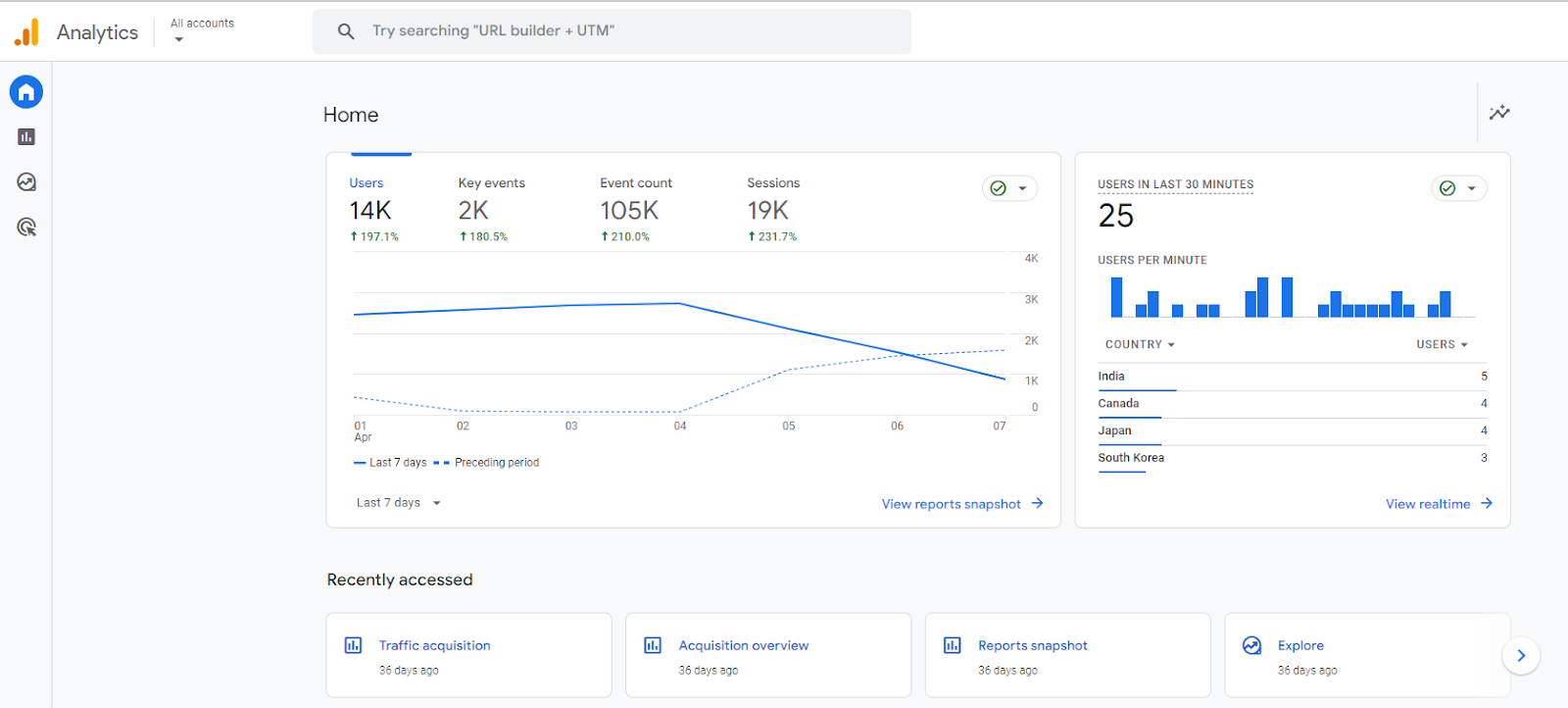
Analyzing data and making reports are key to understanding this info. It gives you valuable insights that help you make smart decisions and plans for your business.
The Role of Analytics in Franchise Digital Marketing
Analytics in digital marketing involves the collection, analysis, and reporting of web data to understand and optimize web usage. Here’s why it’s important:
- Performance Measurement: Analytics help measure the effectiveness of digital marketing campaigns. They provide data on metrics like traffic, engagement, and conversions.
- Customer Understanding: Analytics provide insights into customer behavior, preferences, and trends. This helps in creating personalized marketing strategies.
- Decision Making: Data-driven insights aid in making informed decisions. They help identify what’s working and what’s not, guiding future marketing efforts.
- Competitive Analysis: Analytics tools can provide data on competitors’ performance, helping businesses stay competitive in the market.
Tools for Tracking and Analyzing Digital Marketing Efforts
There are numerous tools available for tracking and analyzing digital marketing efforts. Here are a few:
- Google Analytics: A comprehensive tool that provides insights into website traffic, user behavior, and campaign performance.
- SEMrush: A tool for SEO, PPC, content, social media, and competitive research.
- Hootsuite: A social media management platform that offers analytics for tracking social media performance.
- Moz: An SEO tool that provides data and analytics to improve search engine visibility.
- HubSpot: An all-in-one inbound marketing, sales, and CRM suite that includes comprehensive analytics tools.
Staying Up-to-Date with Digital Marketing Trends
In the ever-evolving landscape of digital marketing, staying current with the latest trends is not just beneficial, it’s essential.
The importace of staying up-to-dare with the trends
- Adaptability: Being able to adapt is important for digital marketers who want to succeed. The online world keeps changing, with new websites, rules, and tools popping up all the time. Keeping up with these changes lets marketers:
- Optimize their strategies: Understanding the latest trends helps marketers optimize their strategies to reach their target audience more effectively.
- Stay competitive: Businesses that fail to adapt to new trends risk falling behind their competitors who are leveraging these trends to their advantage.
- Engage with audiences: By staying current, marketers can engage with their audiences in ways that resonate with them, fostering stronger connections and loyalty.
Resources for Keeping Up with Digital Marketing Trends
There are numerous resources available to help marketers stay abreast of the latest digital marketing trends:
- Digital Marketing Blogs and Websites: Websites like HubSpot, Moz, and Marketing Land (MarTech) regularly publish articles on the latest trends and best practices in digital marketing.
- Social Media Platforms: Following industry leaders and influencers on platforms like LinkedIn and Twitter can provide insights into emerging trends.
- Webinars and Online Courses: Many organizations offer webinars and courses that can help marketers deepen their understanding of digital marketing and stay current with the latest trends.
- Industry Conferences and Events: These provide opportunities to learn from experts in the field and network with other professionals.
- Newsletters and Podcasts: Subscribing to industry-specific newsletters and podcasts can provide regular updates on the latest developments in digital marketing.
Conclusion
From knowing your audience and being visible online to using SEO and social media, these strategies are meant to help your franchise do well in the digital world.
Using these strategies might feel overwhelming at first, but, every big journey starts with a small step. Begin with simple things, like making sure your website works well on phones or creating a social media account. As you get more comfortable, you can try out trickier stuff like SEO and content marketing.
The online world keeps changing, but with these top 10 strategies, you’re ready to handle it well. So, don’t wait around. Start using these strategies now and see how much better your franchise’s online marketing can get. Good luck!
References
- https://hawksem.com/blog/franchise-digital-marketing-strategies/
- https://www.hyperlocology.com/blog/franchise-digital-marketing-top-10-strategies
- https://mediaboom.com/news/franchise-digital-marketing/
- https://insightsabm.com/blog/10-digital-marketing-strategies-for-franchises/
- https://www.yourdigitalresource.com/post/10-must-have-tools-for-digital-franchise-marketing

